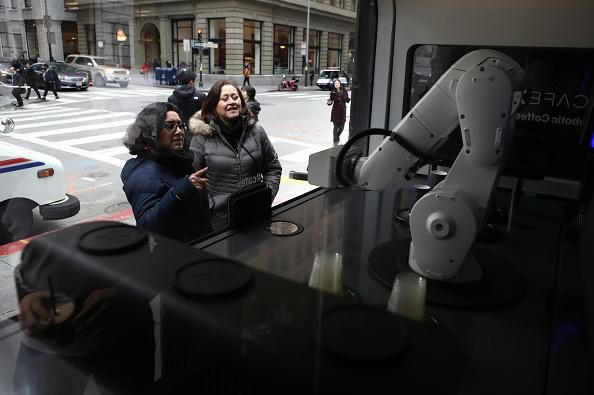Scientists Are Getting Closer To Creating Terminator Robots

Scientists found a way to create liquid metal that can stretch in different directions and can also be used to mimic the movements of the fictional T-1000 robot from “Terminator 2.”
The research team behind the liquid metal has not created a Terminator machine yet, but they are closer to building the foundation of soft robotics. A video from the American Chemical Society showed the liquid metal in action.
According to a report from the ACS, the researchers added iron particles to a drop of tin, gallium and indium alloy that was also immersed in hydrochloric acid. The liquid metal's surface tension dropped down thanks to the gallium oxide layer that formed on the surface of the droplet. This also allowed the metal to stretch and move without breaking.
Gallium, certain alloys and basically metals that are liquid when in room temperature possess certain characteristics that allow their possible use in flexible electronics and soft robotics. They have a low melting point, high conductivity and high deformability, so they are certainly perfect for these applications.
The liquid metal was made possible through the addition of magnetic particles like iron and nickel. However, many magnetic liquid metals have high surface tensions which limit their movements. Mostly, they can only move horizontally. They also need to be submerged in liquid, so they won't turn into a paste. The researchers had to find a way to work around this.
Beihang University scientists Liang Hu, Jing Liu and their team wanted to create liquid metal that can move both horizontally and vertically without being submerged in liquid. This is why they added iron particles to the droplets of alloy immersed in hydrochloric acid. Applying magnets in opposite directions allowed the research team to test the liquid metal and see how much it could stretch. Turns out, it can expand up to four times its resting length. Additionally, it's also possible to connect two immersed, horizontal electrodes using the liquid metal. Its conductive properties can light up an LED bulb.
While the scientists are a long way from creating morphing androids, they were able to create a magnetic liquid metal that doesn't require being fully immersed in liquid.
The researchers reported their findings in a paper entitled "Magnetic Liquid Metals Manipulated in the Three-Dimensional Free Space."
© Copyright IBTimes 2024. All rights reserved.




















